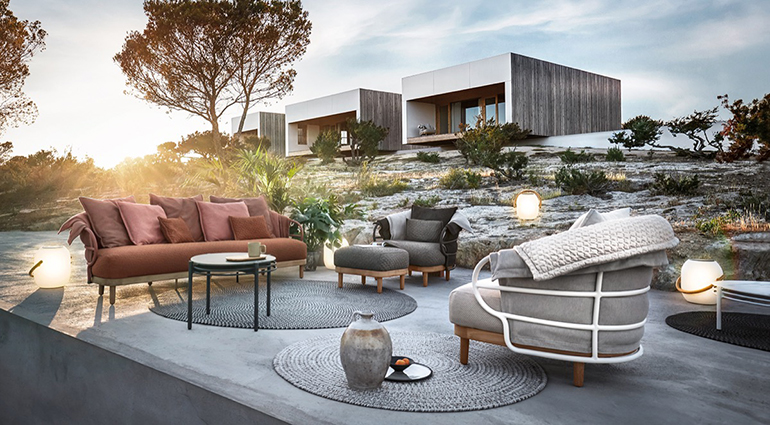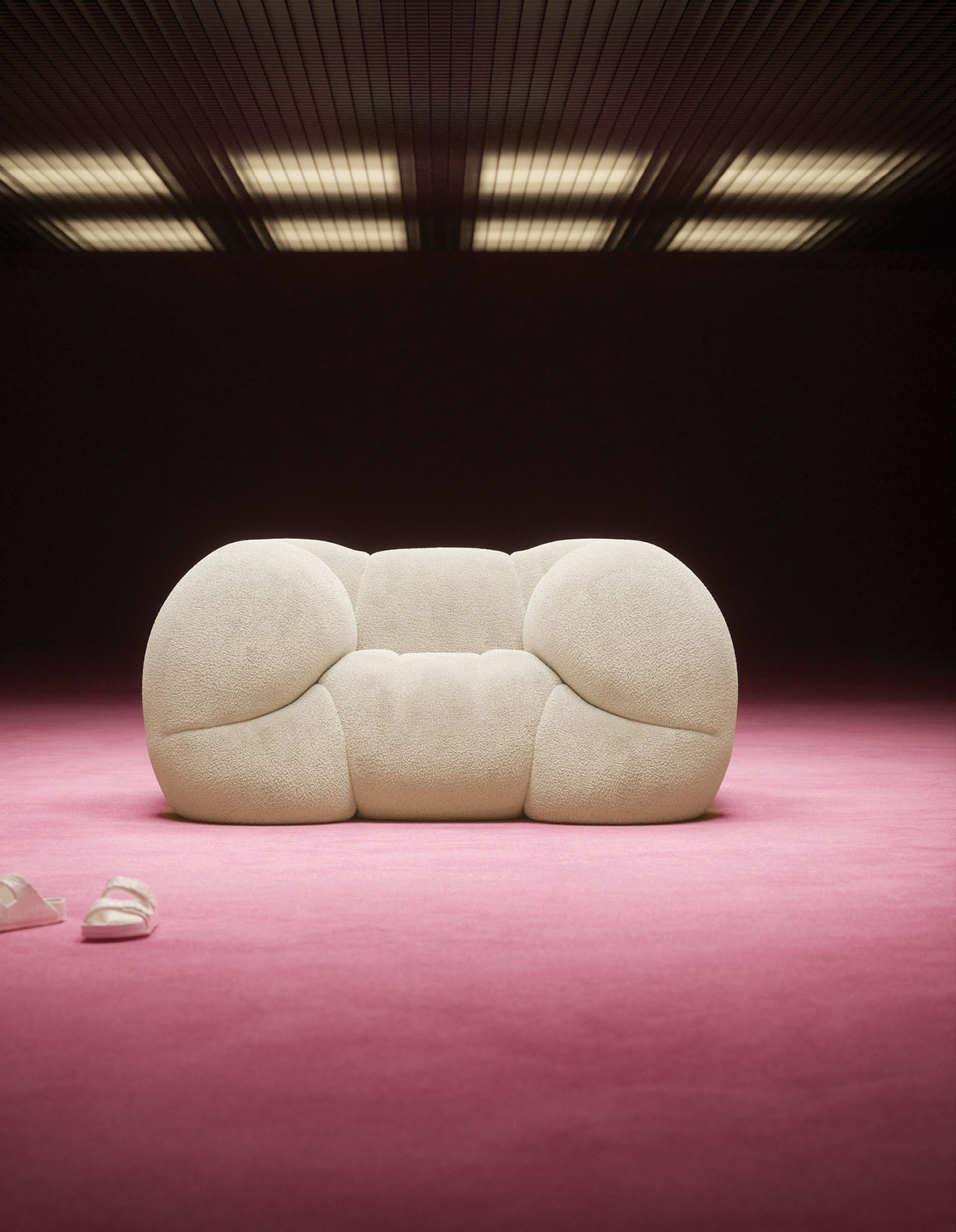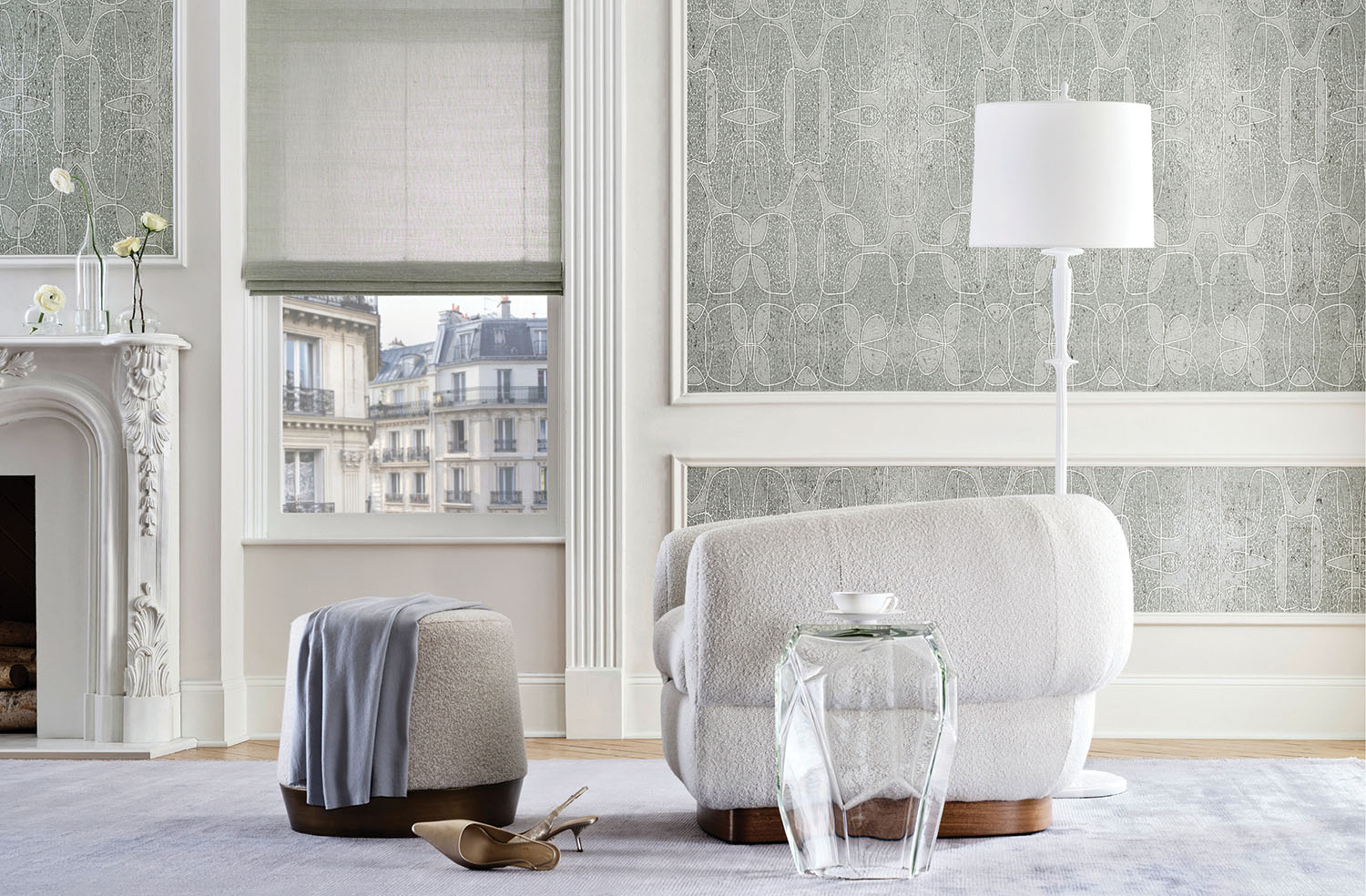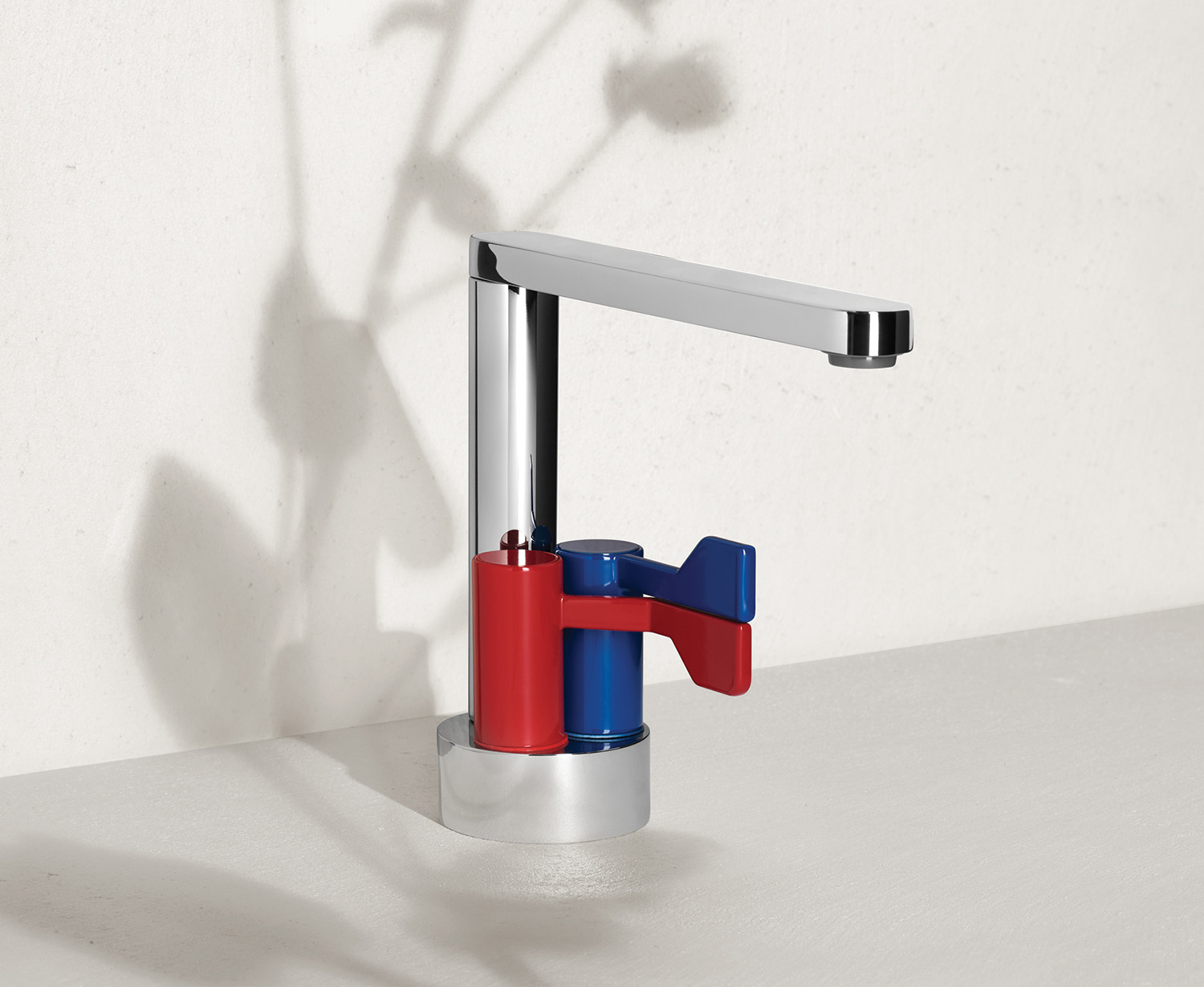10 Questions With… Sebastian Herkner
 Sebastian Herkner was once a reluctant camper—but it was during these trips around Europe with his family that the German designer says he uncovered a love for craftsmanship. A graduate of Hochschule für Gestaltung Offenbach am Main (the Hessen State University of Art and Design), Herkner founded his own studio in 2006 in Offenbach am Main, Germany, channeling his passion for craft and traditional manufacturing techniques into products for the likes of Ames, Cappellini, Dedon, Gloster, Linteloo, Moroso, Pulpo, The Rug Company, Thonet, and Wittmann, with a breakthrough moment in 2012 with the understated elegance of the hand-blown glass-and-metal Bell table for ClassiCon.
Sebastian Herkner was once a reluctant camper—but it was during these trips around Europe with his family that the German designer says he uncovered a love for craftsmanship. A graduate of Hochschule für Gestaltung Offenbach am Main (the Hessen State University of Art and Design), Herkner founded his own studio in 2006 in Offenbach am Main, Germany, channeling his passion for craft and traditional manufacturing techniques into products for the likes of Ames, Cappellini, Dedon, Gloster, Linteloo, Moroso, Pulpo, The Rug Company, Thonet, and Wittmann, with a breakthrough moment in 2012 with the understated elegance of the hand-blown glass-and-metal Bell table for ClassiCon.
At just 37, Herkner already has a surprisingly long list of accolades under his belt, among them the German Design Award and designer of Cologne fair IMM Cologne’s annual house installation, Das Haus. Most recently, Herkner landed yet another prestigious award, Designer of the Year 2019 for Paris-based furniture fair Maison&Objet. Here he shares with Interior Design what compelled him to choose industrial design as a profession, how he tracks use of his products, and the conversation-starters at the dinner parties he throws.
Interior Design: You were recently named Designer of the Year 2019 for Maison&Objet. How do you plan to use the exhibit space that comes with this award?
Sebastian Herkner: We’ll be exhibiting about 10 years of work, focusing on the way we work with different topologies. With four products—the Bell table, which we produced for ClassiCon, and the fiber-and-teak Mbrace chair for Dedon among them—we’ll show our production process and how we work together with craftspeople. We really want to inform people that craft takes time, is super hard work, and you need patience—these objects will not arrive next day delivery on Amazon Prime. Freiherr von Poschinger, the glass manufacturer that produces the glass base of the Bell table, recently turned 450 years old—and is run by the 15th generation of the same family. The weaving of the seating shell for the fiber-and-teak Mbrace chair, as another example, takes four days.

ID: What new products do you plan to present?
SH: At both IMM and Maison&Objet, we will present Reed, a new rug for The Rug Company; Bent, a new lamp for Pulpo; a new kind of hammock chair with arms produced in Colombia for Ames; and a bar stool to complement the 119 chair we presented in 2018 for Thonet.
ID: What products have you completed recently?
SH: Nowadays you see these very cozy offices, and with Wi-Fi you can work anywhere. At office furniture fair Orgatec, we presented Miles Ahead, a new collection of soft office seating with a residential feel for Austrian upholstery furniture company Wittmann. The collection jumps off our previous collection for Wittmann, called Merwyn. They both have some of the same design details and language but are also a little different—a bit like in a patchwork family, with the different parent constellations. Wittmann is a couture upholstery brand doing very traditional at very high quality. Most companies use different kinds of foam for the seat element, gluing them to each other, but over time foam loses stability. Wittmann still uses metal springs—and the big advantage with springs is that the stability, comfort, and flexibility stays the same forever.
Just like in the office, outdoor design is changing. With new textiles and new foams, we can make outdoor furniture that looks a lot more like indoor furniture. In Milan last spring, we presented a new sofa called Dune for outdoor furniture manufacturer Gloster. The idea was to create something with the appeal and approach of an indoor product, but for the outdoor—using the softness of newly developed textiles. In partnership with Sunbrella, an industry leader when it comes to outdoor fabrics, we developed the first 3D-knitted textiles for outdoors. The idea was to have something more spontaneous, something with cushions and layers of blankets. So, we have a teak base with an aluminum frame, a lot of cushions, and a duvet-like element that allows you to get really cozy and comfortable, in a kind of nest.

ID: What in your childhood influenced your design thinking?
SH: When I was young, my family was always camping—and camping with family Herkner means you change your campground every day. When you are 10 or 11 years old, it’s a nightmare! You’d erect the tent in the evening, sometimes with a flashlight, and break it down in the morning. Then—since my mother is addicted to churches—you’d drive to another city to look at another church. When you’re young, you don’t completely understand why you are going to another church as they look all the same.
However, we also visited cities that I now understand were connected to design or to craft—say a city famous for leather gloves, another for ceramics, another for porcelain blades, and another for chocolate. It was in these places that I really started to think about craft or design, and how it would be connected to a specific region. I live in Offenbach am Main, Germany, which was once famous for its leather goods. But these manufacturers closed—Montblanc, for example, moved to Italy. A leather fair, the Internationale Lederwaren Messe and the Deutsches Ledermuseum (German Leather Museum) are still in Offenbach, but it’s really sad actually, as for the most part the identity in the history of this city is gone. Nowadays we lose a lot of craft because companies choose Eastern Europe or Asia because it’s cheaper.
ID: What made you choose design as a career path?
SH: I never really knew about ‘product designer’ or ‘furniture designer’ as professions—in school or in the news it was just about the fashion designer, architect, or artist. Industrial designer came later. For me, becoming a designer was more about falling in love with a nice chair at a flea market that I would then take home and do research on. In this way I came across designers such as Arne Jacobsen or Charles Pollock.

ID: How do you start your design process?
SH: It’s first really important to me to have a company that is responsible, that has a vision, and really wants to make something new. I then meet them personally, as you must understand if you can work together—sometimes it takes six months, but it can also take three years to produce something. Then we start sketching, scribbling, making 3D sketches—not really a model but something to discuss detail. Then the ping-pong back and forth between us and the client begins. There’s always a dialogue.
ID: How do you use social media?
SH: It’s very interesting to see how someone with a product of mine interprets, combines, and discusses it. On Instagram with the hashtag #sebastianherkner, I can find my products in different scenarios with different concepts. It’s also a great way to correspond with clients or people in general.

ID: What are you reading?
SH: Changing politics and society have a big effect on a designer’s work, so every morning I am reading newspapers. In Paris recently, I saw this beautiful retrospective exhibition on architect and designer Gio Ponti at the Musée des Arts Décoratifs. So, I bought the book on the exhibition. It’s really amazing to understand Ponti’s complete oeuvre.
ID: What does your home look like?
SH: More and more eclectic. My home is not a white cube. It’s always growing and changing and may, at times, be too colorful. Visiting clients, speaking, and production means I am traveling half the year and I always buy something during my travels—from a nice vase, to a bowl, rug, piece of art, or a stool. Souvenirs remind you about an experience—and mine are useful. If we have a dinner party, all the dishes are all different. The metal salad bowls are from Zimbabwe, the black ceramic soup bowls are from Colombia, and the ceramic dessert plates are from Thailand. With new people at the table, these pieces are great conversation-starters, as I like to tell the story behind the object.
ID: Do you have a design object in your house that is particularly important to you?
SH: We recently bought a piece by German artist Imi Knoebel. He works with color blocking and color stripes, and I really like how he uses color and shapes. I am not very minimal in my work, but he is.


